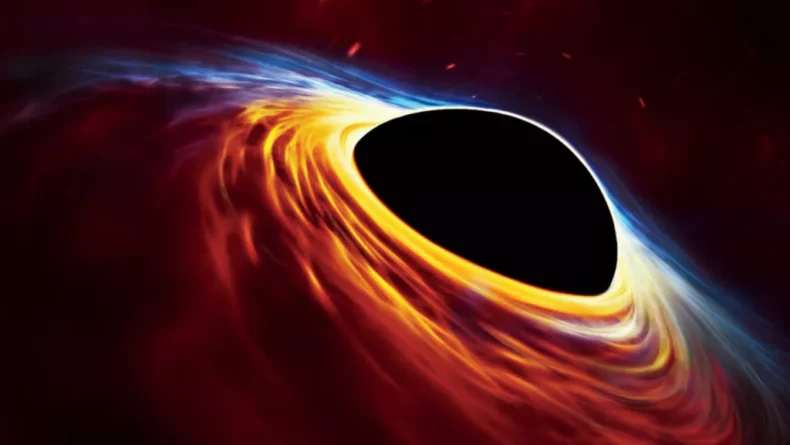Australia: Every second, the fastest-growing black hole ever witnessed swallows the mass equal to an entire Earth.
A multinational scientific team discovered that this massive black hole has a mass three billion times that of the sun. Its immediate consumption is forcing the monster to expand rapidly. The black hole consumes by sucking materials from a narrow circle of gas and dust swirling around it. It is the process known as accretion.
Other similar-sized black holes ceased expanding billions of years ago, but this newly found black hole is still developing. It’s now 500 times larger than Sagittarius A*, the Milky Way’s supermassive black hole. It could fit the whole solar system, including Earth, beyond its event horizon, the threshold beyond which nothing can escape.
Based on this data, the researchers calculated that the newly discovered black hole is the fastest expanding black hole discovered in the last 9 billion years.
“Now, we want to discover why this one is different — did anything terrible happen?” lead researcher Christopher Onken said. He is a researcher at the Australian National University’s Research School of Astronomy and Astrophysics, said in a statement. “Perhaps two massive galaxies collided, funneling a massive amount of material onto the black hole to feed it.”
The fast accretion of materials to the black hole’s surface has also resulted in a quasar emitting enough energy to make it 7,000 times brighter than the light from every star in the Milky Way. Indeed, this quasar (named SMSS J114447.77- 430859.3) has been the most luminous of these events during around two-thirds of the universe’s 13.8-billion-year history.
When observed from Earth, the quasar has a brightness of magnitude 14.5, which means it is just slightly fainter than Pluto. It is also brilliant enough to be seen by sky watchers with decent telescopes in a very dark place.
The feeding black hole was discovered as part of the SkyMapper Southern Sky Survey. It was carried out using the 1.3-meter (4.3-foot) telescope at Siding Spring Observatory in Australia.

Despite the quasar’s extraordinary brightness, Onken and his colleagues characterized the discovery as a “very enormous, unexpected needle in a haystack.”
“Astronomers have been looking for things like these for almost 50 years,” stated Onken. “They discovered millions of fainter ones, but one stunningly brilliant one had gone overlooked.”
Christian Wolf, an associate professor at ANU and a part of the study team, stated that he believes astronomers are unlikely to discover another black hole expanding at this pace or powering a quasar of this scale or higher.
“We’ve basically run out of the sky where anything like this may be lurking,” Wolf said. “We are rather certain that this will be an unbreakable record.”
An article outlining the finding has been presented to the journal Publications of the Astronomical Society of Australia. Although the article has yet to be peer-reviewed. The arXiv database has a preprint version.













